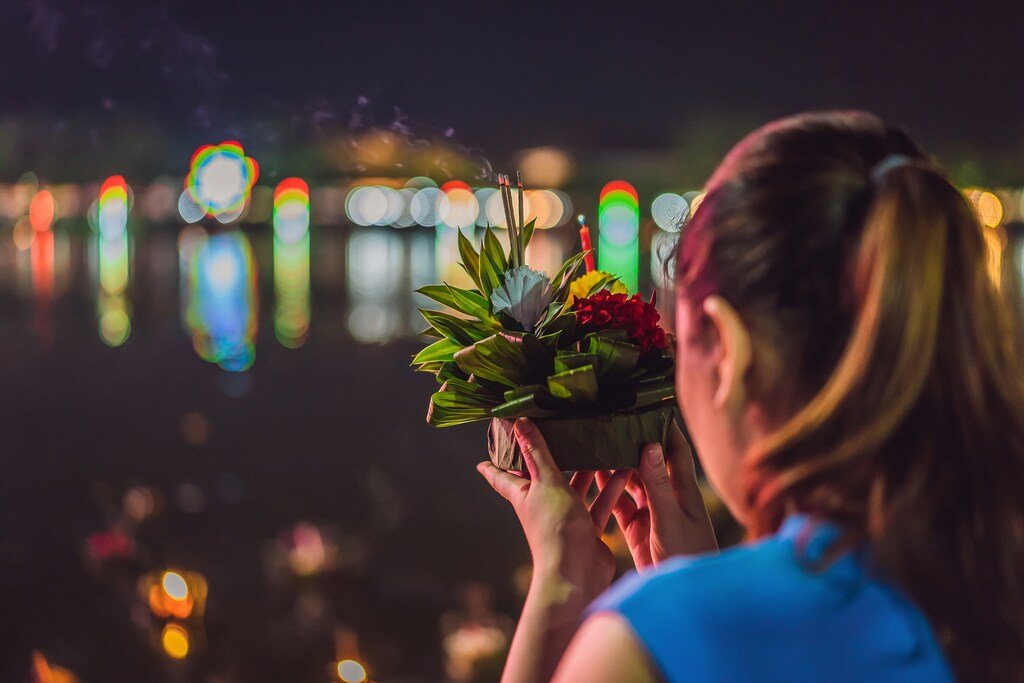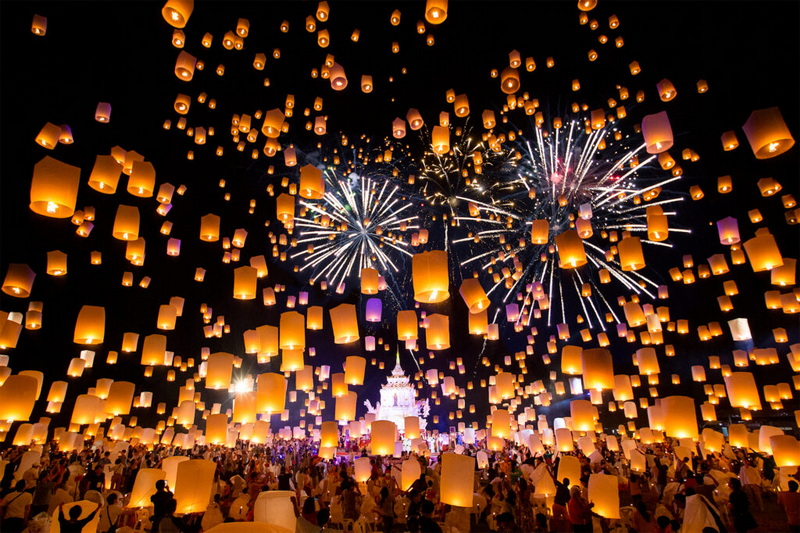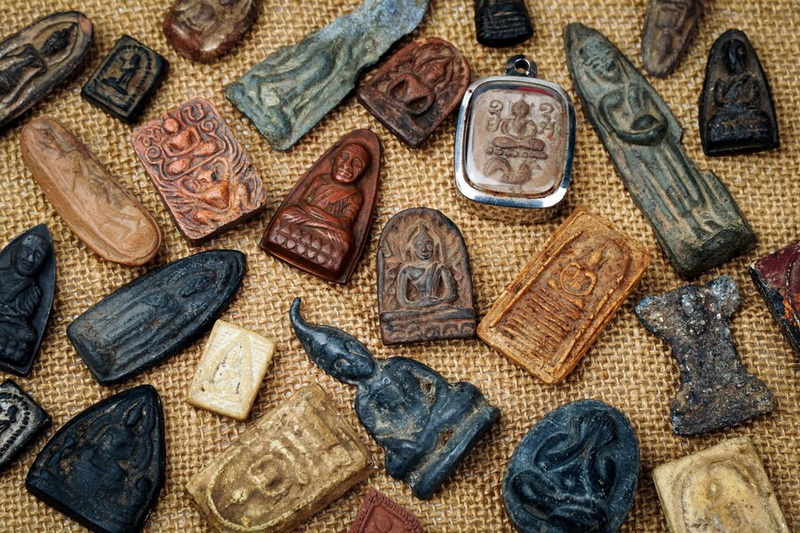Beliefs about Loi Krathong Day and Their Connection to the Yi Peng Lantern Festival

Understanding the Cultural Significance of Loi Krathong Day and the Yi Peng Lantern Festival
Loi Krathong Day or the Yi Peng Lantern Festival are one of Thailand’s most cherished celebrations. This festivals are steeped in cultural beliefs and traditions that create unforgettable experiences for those who participate. In this article, we will explore the beliefs surrounding Loi Krathong Day and their connection to the Yi Peng Lantern Festival in greater detail.
In the northern region of Thailand, Loi Krathong is also referred to as “Yi Peng,” which signifies making merit on the full moon day of the second Lanna month. This second month corresponds to the twelfth month in the Thai calendar. Yi Peng is also known as “Kite Hom” or “Smoke Kite,” a tradition involving the use of thin cloth to collect smoke beneath it. This allows the lanterns to float in the air as an act of worship towards Phra Upakut, a revered figure believed to have practiced spells in the depths of the ocean or at the sea’s navel. This belief aligns with those held by the Burmese people.


Beliefs about Loi Krathong Day:
- Loi Krathong to ask for forgiveness from Phra Mae Ganga: Participants float krathongs in the river as a way to seek forgiveness from Phra Mae Ganga, the guardian deity of water sources. This is because humans not only use water but also pollute it with garbage and sewage.
- Loi Krathong to worship the gods: The festival honors various gods, including Shiva, Vishnu, and Brahma. It also pays respect to Buddha by floating lanterns to worship his footprint, enshrined at the sandy beach of the Nammada River.
- Cutting the ends of the hair and nails into the Krathong: An ancient belief involves placing cut hair and nail ends into the krathong and floating them away, symbolizing the removal of misfortune, bad things, or suffering.
- Putting money in the Krathong: This act is believed to bring wealth, with money pouring in and financial matters running more smoothly.
- Upside-down Krathong: Many people fear that their krathong will overturn, as this is believed to be a bad omen. However, this is more of a personal belief, as an overturned krathong can be due to strong currents or winds.
- Taking a bath under the moonlight: During the full moon of the 12th lunar month, people would traditionally bathe under the moonlight at midnight. This practice was believed to wash away bad things and bring prosperity while making the skin soft like moonlight.
The beliefs surrounding Loi Krathong Day are deeply connected to the Yi Peng Lantern Festival. In the northern part of Thailand, Loi Krathong and Yi Peng share the theme of seeking forgiveness and paying homage to spiritual beings. The Yi Peng Lantern Festival, also known as “Kite Hom” or “Smoke Kite,” involves releasing lanterns into the air to worship Phra Upakut, a revered figure in Thai and Burmese culture. By understanding the beliefs and practices of Loi Krathong Day, we can better appreciate the intricate relationship between these two enchanting Thai celebrations.

















Leave A Comment